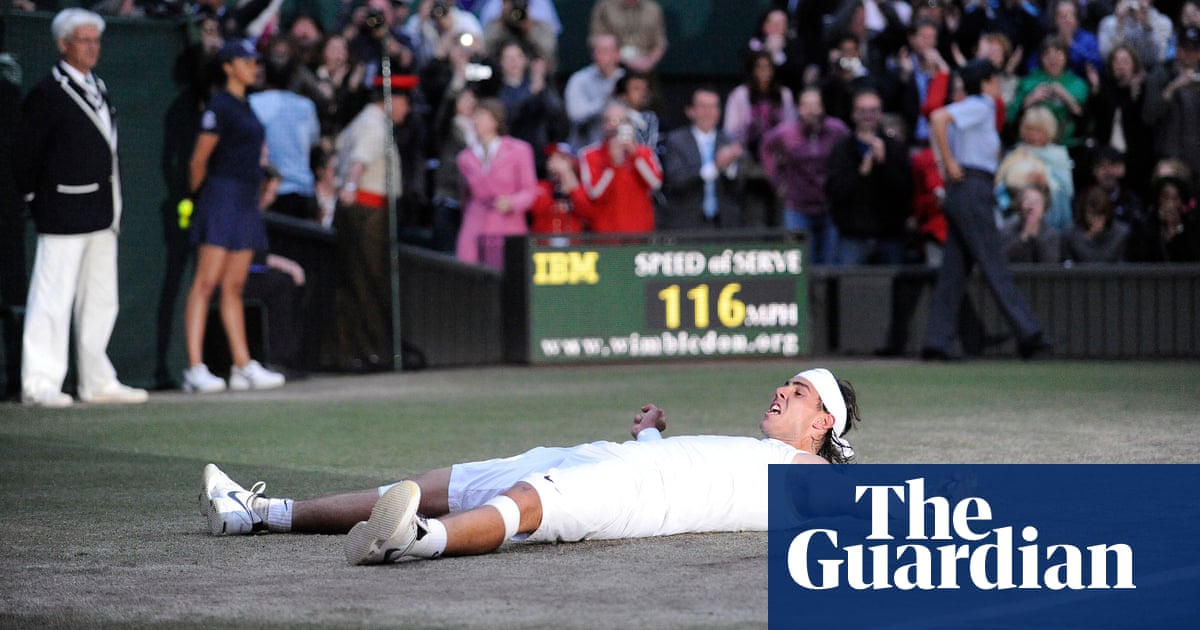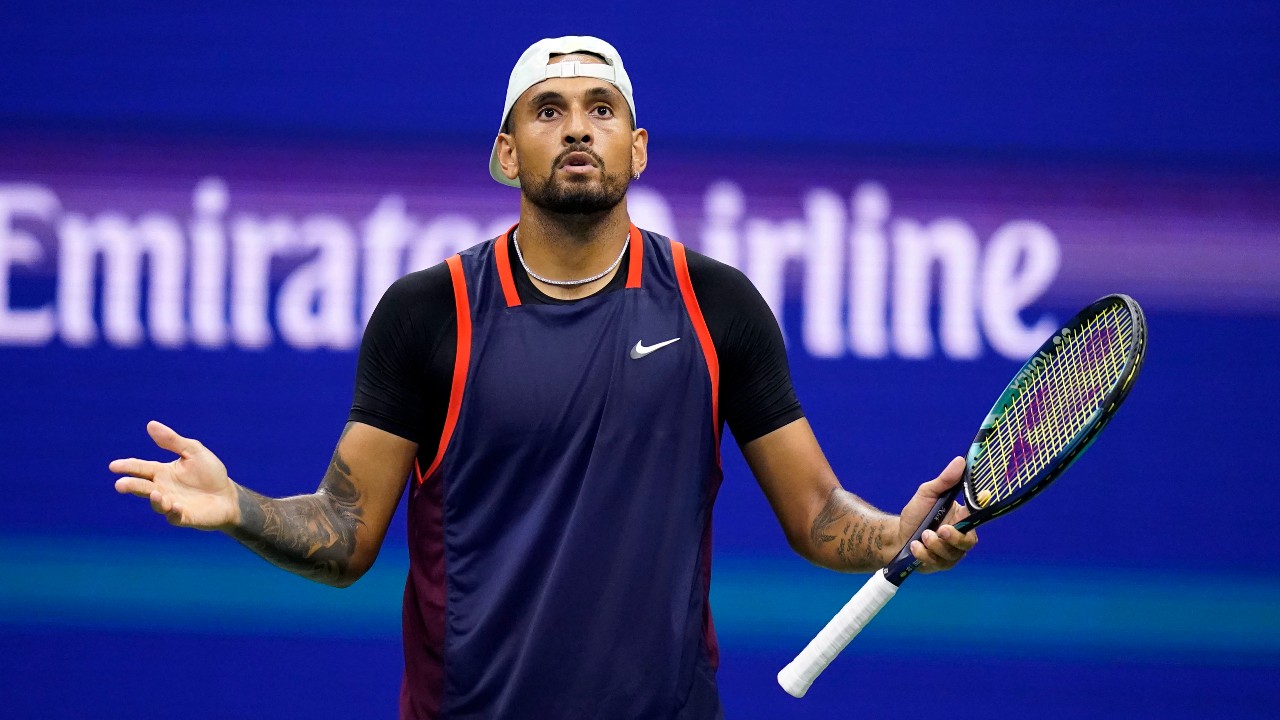Rafael Nadal’s retirement draws a line under golden era of men’s tennis | Simon Cambers

There are some moments in sport that stand above all others. For Rafael Nadal, that moment came in the early evening at Wimbledon in 2008. With natural light fast running out, Roger Federer’s final forehand landed in the net and Nadal fell on his back, joy unconfined. At 22, the Spaniard was Wimbledon champion, something he – and many others – had thought might be beyond him.
In that instant, Nadal became a true superstar. Already virtually unbeatable on clay, the idea that he might be able to beat Federer on the Swiss’s favourite surface, where he had won five times in a row, seemed fanciful. But Nadal turned tennis logic on its head, for good. Two years later he won Wimbledon for a second time and when he won the US Open later the same year. He was only the seventh man to complete the career grand slam of all four majors, and the youngest in the Open era.
Now, he is retiring. At the age of 38, with his body no longer allowing him to compete for the biggest titles, the decision may have been inevitable, but that doesn’t reduce its impact in any way. With 22 grand slams to his name, including 14 French Open titles, and 92 tournament wins worldwide, his place in history is assured. He spent 209 weeks as the world No 1 and was ranked inside the world’s top 10 for a record 912 consecutive weeks, a testament to his ability, not only with a racket, but also to bounce back from the many injuries he suffered over the course of his career, his unique physicality both his superpower and his eventual undoing.
Andrés Iniesta, the footballer who scored the winning goal for Spain in the 2010 World Cup, describes Nadal as the best sportsman in the country’s history. He might just be right. Certainly, his record of French Open titles seems destined never to be beaten. From his debut at Roland Garros in 2005, Nadal dominated clay-court tennis even more than Björn Borg, a six-time champion, had done. His vicious topspin forehand, unbelievable movement, incredible tenacity and faultless attitude enabled him to bully anyone who dared to oppose him, including Federer and Novak Djokovic.
He won 81 straight matches on clay between 2005 and 2007 and at Roland Garros he lost only four times, twice to Djokovic, once to Robin Soderling in 2009 and finally this year, when he was half-fit, to Alexander Zverev. The sound of the on-court announcer, Marc Maury, reeling off Nadal’s victorious French Open triumphs, year by year, is as iconic as it was intimidating for his opponents.
But he was much more than just a mudlark. Nadal won four US Opens and two Australian Opens, to go with his two Wimbledon triumphs and 14 French Opens. He was always adapting his game, adding pace to his serve, flattening out his forehand and ripping his two-handed backhand. Naturally right-handed, some players said playing Nadal was like facing a man with two forehands. His net play was second to none.
Some of the shots he hit were almost beyond words, his stunning court coverage and strength at full range meaning anything was possible, wherever he found himself. Sometimes he stood miles back to return serve but by the time the opponent hit the next shot, he was up on the baseline, taking control. His footwork, scrambling around his backhand to hit forehands inside out with venom and precision, was breathtaking.
If the 1970s saw Borg, Jimmy Connors and John McEnroe, helped by the expansion of television coverage, make tennis box office viewing, Nadal, Federer and Djokovic took tennis to another level. Between them, the trio have won 66 grand slams and dominated the sport to the extent that only a select few, including Andy Murray, were able to even get a foot in when it came to the majors. They were faster, fitter, better.
The contrast in styles between the power and defence of Nadal and the seemingly effortless aggression of Federer made for stunning contests. The pair met 40 times, with Nadal winning 24, leading 10-4 in slams. He played Djokovic even more often, with the Serbian ending up 31-29 ahead. If Nadal does not play singles in the Davis Cup in Malaga next month, his last event, his last ever singles match will have been against Djokovic, at the Olympics in Paris this summer.
As it was with Federer, it’s hard to imagine a tennis world without Nadal. His forehand up the line is forever etched on the memory, his impeccable attitude and the way he treated everyone, from opponents to the media, an example to all. As Darren Cahill, one of the sport’s leading coaches, said on social media on Thursday, he was the ultimate role model. “[Nadal] possessed every quality in an athlete that you want for your own kids to try & emulate. Kindness, respect, hard-working, loyal, generous, belief & a willingness to fight for every single point. A role model, an inspiration to every generation and all-time legend.”
With Nadal’s imminent departure, the golden era is truly over. With Federer having retired two years ago, and Nadal heading off to a golf course nearby, Djokovic is the last of the three remaining. The Serbian may well add to his 24 grand slam titles in due course, even if Jannik Sinner and Carlos Alcaraz, who shared the majors in 2024, will make that increasingly difficult. But Nadal leaves tennis as one of the all-time greats and someone who changed the sport for the better. Not many people can say that.
Related
Cameron Norrie advances at Indian Wells but top seed Alexander…
Great Britain's Cameron Norrie fought from a set down to reach the third round at Indian Wells but top seed Alexander Zverev was d
Tommy’s Time: All-Court American Seeks Next Milestone
His coach Brad Stine says that these types of big goals are what keeps the New Jersey native motivated. “There are still a lot of things within the sport tha
Nick Kyrgios acknowledges uncertain future after retirement from match with…
The latest setback for Nick Kyrgios has the Australian tennis player wondering aloud about his future. A nagging wrist injury forced an emotional Kyrgios to r
Former Indian Wells champion says she is ‘very sorry’ as…
The 2025 Indian Wells tournament is well underway as the stars of the WTA Tour search for success in the Californian desert.Several top stars will believe they












